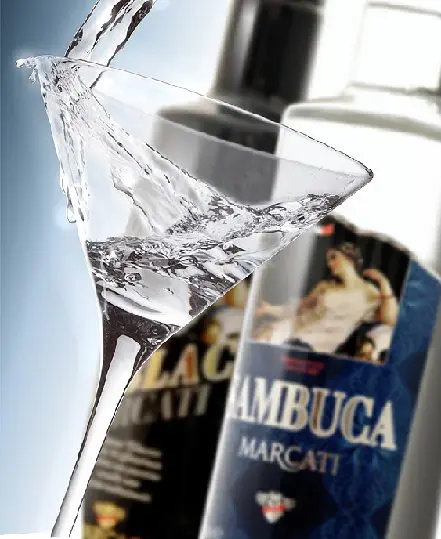The young beauty in antique clothes has been smiling dreamily from the Markati sambuca label for more than 70 years. The image of a charming Venetian is well known to lovers of anise liqueur all over the world: Gagliano Marcati exports its products to 30 countries. According to Signor Pietro Marcato, President of the firm, his family has achieved success thanks to three factors: hard work, loyalty to tradition and passion for creativity.
Currently, Markati sambuca is supplied to the EU countries, Japan, Australia and South America. The drink is produced according to the original recipe created by the founder of the company, Pietro Markati. The notebook with the notes of the great blender is kept by his heirs as the greatest trade secret.
In 2007, Pietro Marcato, President of Gagliano Marcati, received the prestigious Marco Polo government award for excellence in the export of high quality Italian products.
Historical reference. Returning from the war, in 1919 the brothers Pietro and Luigi Marcati opened a pharmacy in Veronella, near Verona. Signora Luigi was quite satisfied with the life of a provincial pharmacist, but Pietro was a born experimenter. He devoted all his free time to experiments on creating various herbal tinctures, and wrote down the most successful recipes in a notebook, which later became legendary.
Over time, the demand for Marcati liqueurs increased to such an extent that in 1929 the former pharmacist founded his own company and built a distillery on the outskirts of Verona, in Borgo Roma, at the very city gates. Signor Pietro chose the place for the plant in such a way that it would be convenient to deliver alcohol from there to all the cities of the Veneto and Trentino regions.
Marcati flourished until World War II, with sambuca, limoncello, amaro and amaretto being the most successful. But in 1943, during one of the bombings, the company’s plant was completely destroyed.
After the war, the Allies were highly suspicious of the entrepreneurs who worked under Mussolini’s regime. To revive the family business, Giuseppe Marcati, Signor Pietro’s son and heir, had to change his surname to Marcato. The distillery in Borgo Roma was only rebuilt in 1947.
In the 70s of the XX century, thanks to Italian cinematography, there was a real explosion in the popularity of sambuca in the world. The Marcati company simply could not help but take advantage of this: their anise liqueur was one of the best. During this period, the company’s management concluded several very profitable export contracts.
A huge success for Marcati was the purchase in 1986 of one of the oldest Italian companies for the production of wines and grappa – Gagliano. The assortment of the combined company Gagliano Marcati has increased so much that the small distillery in Borgo Roma no longer met the requirements of the time. Therefore, the Markati family decided to move the plant to the commune of Sommacampagna. The area of the new industrial complex is 4000 m². The enterprise is automated, and only 12 people are enough to serve it.
The volume of production by 1999 amounted to one million bottles, of which 30% were exported, and 70% were sold in Italy. At the beginning of the XNUMXst century, when the company was inherited by the grandchildren of Pietro Marcati: Pietro, Andrea and Maria Paola Marcato, the company acquired another old Italian brand, Distilleries Morandini di Lovere.
Types of sambuca Markati
Two varieties of Marcati sambuca are produced with a strength of 40%:
- Sambuca Marcati – colorless transparent liqueur with anise and spice aroma;
- Sambuca Marcati Black is a dark, almost black anise liqueur with the addition of licorice root.










